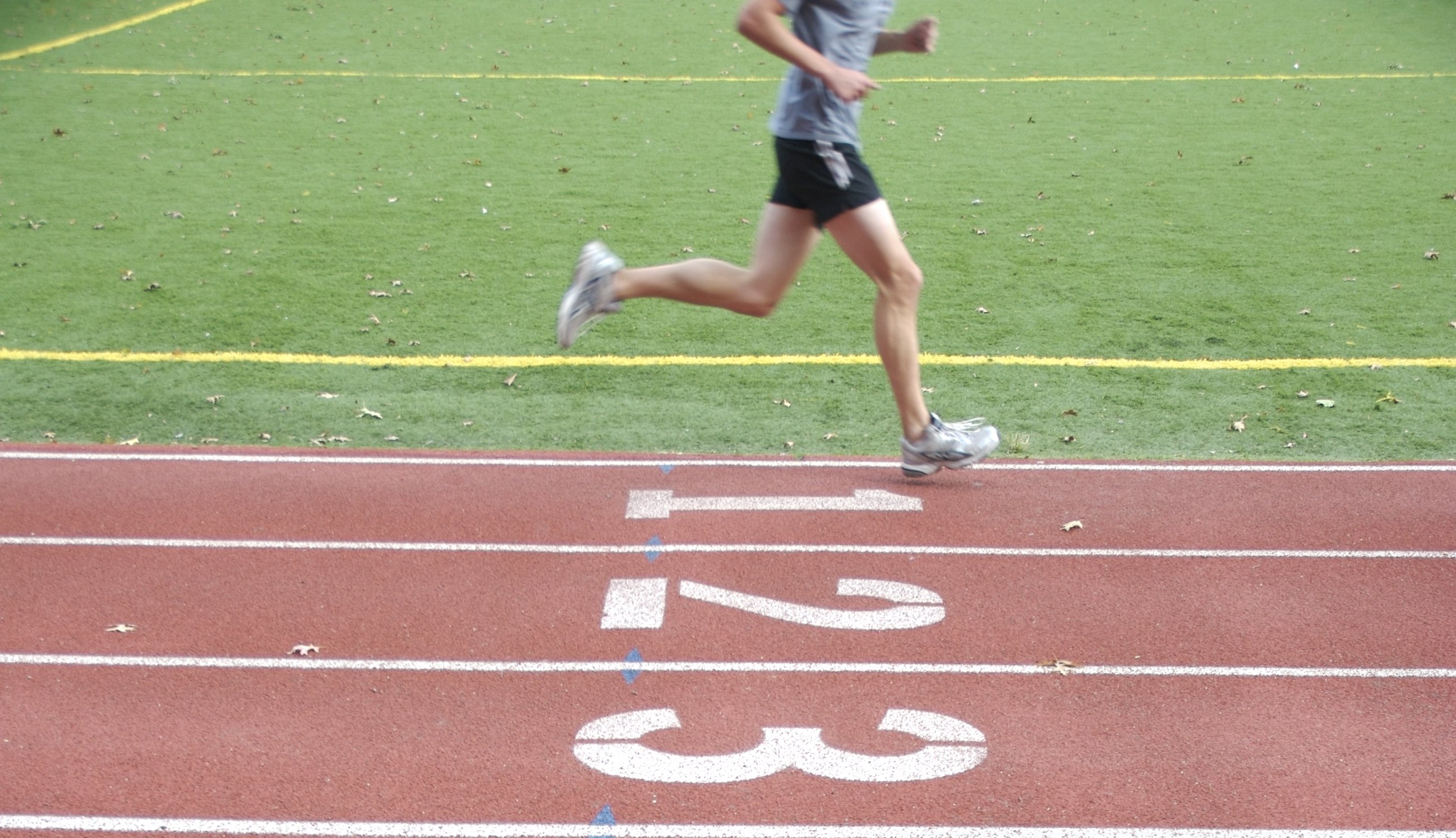
Cooper Test
The most accurate VO2 max self-test. Run your best time!
 The Cooper Test is a proven health and performance indicator.
The Cooper Test is a proven health and performance indicator.The Cooper Test is a maximum effort, 12-minute run designed by Kenneth Cooper, MD to test your cardiorespiratory fitness. The test has a very high correlation with VO2 max lab testing, which makes the 12-minute run or the 1.5-mile run version of the Cooper Test the most accurate self-test for VO2 max (1, 3).
If you want to know whether your cardio fitness level is optimal for athletic performance and overall health benefits, this test will give you a reliable answer. If the test shows you need to improve, you'll have a specific target time or distance to aim for next time.
Age-group standards for the Cooper test.
The Cooper Institute tested tens of thousands of participants and developed fitness performance standards beginning in 1968 that continue to be used today in the military, law enforcement, and pro sports.
To see how you measure up, here are 1.5-mile run standards for the Navy Seals and FBI, with age group standards for men and women from the Cooper Institute.
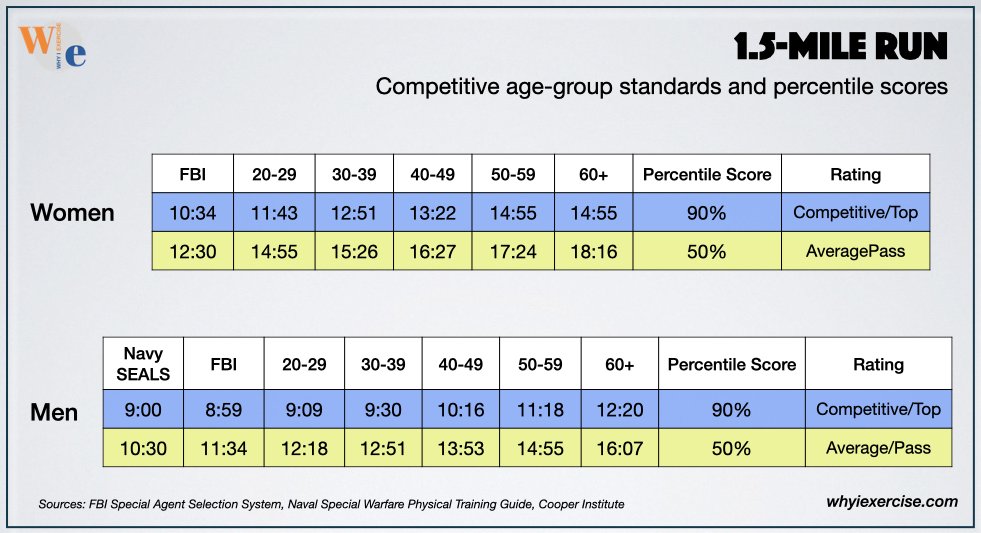 Top performance standards for the Cooper 1.5-mile run.
Top performance standards for the Cooper 1.5-mile run.12-Minute Run vs. 1.5-Mile Run: Which Cooper test is better?
The 12-minute run may be your preferred test if you run slower than 8:00 per mile or 5:00 per kilometer, as you’ll finish this test more quickly than you would for the 1.5-mile run. The disadvantage is that there is no finish line--you keep running until 12 minutes are up, which can be mentally challenging.
Choose the 1.5-mile run to have a defined finish line to aim for and to finish the test sooner if you run faster than 8:00 / mile. Click here or scroll down to compare the age group charts for the 1.5-Mile Run and the 12-Minute Run.
*Please note that the Cooper test is very strenuous. Before taking the test, check with your health care provider to make sure maximum exercise testing is safe and appropriate for you at this time.*
Three Steps To run your best Cooper Test!
Step 1: Pre-Test Warm-up
Rob Cowell, PT demonstrates warm-up exercises in this YouTube video.
A thorough warm-up is essential before maximum effort if you're looking for your best possible performance. I recommend starting with a brisk walk or a brief light jog, followed by calisthenics and stretching exercises to wake up and activate your running muscles.
Running drills mixed with stride cycles and leg swings are also helpful. My running drills are A-skips, carioca, high knees, and backward running. I get my heart rate up enough to prepare my muscles and feel warmed up, but not so much to take energy from the test itself.
The warm-up takes about 10-15 minutes.
Step 2: Find your best pace for the Cooper Test
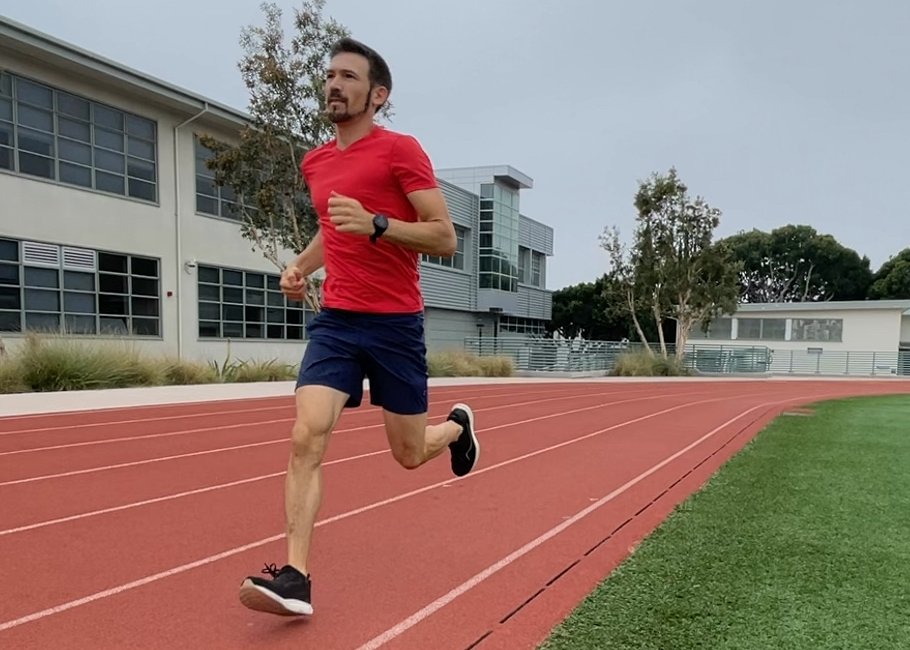 Prepare for the Cooper test with this workout.
Prepare for the Cooper test with this workout.When you know your pace, you can get through the gauntlet of the Cooper Test with your best result. To find your best pace, I recommend a prep workout a week before the test.
Trained athletes run interval workouts to practice their racing pace over shorter distances with rest breaks between runs (4-5). We can use the same method to identify your pace for the Cooper test.
After warming up, run two 1/2 mile runs and two 1/4 mile runs at your expected pace for the test. Take a recovery jog of equal time after each run. For the first 1/2 mile, take your best guess at your pace.
When you finish, jog or walk/jog the same amount of time you ran, then run half mile number two. The second run should come out near an optimal target pace for the Cooper Test. Focus on holding that pace for the 1/4 mile runs as you finish the workout.
If you’re going to run the 12-minute test, you can do the same workout by running 4 minutes x 2 plus 2 minutes x 2 at the pace you expect to run for the test, with equal time jogs between your runs.
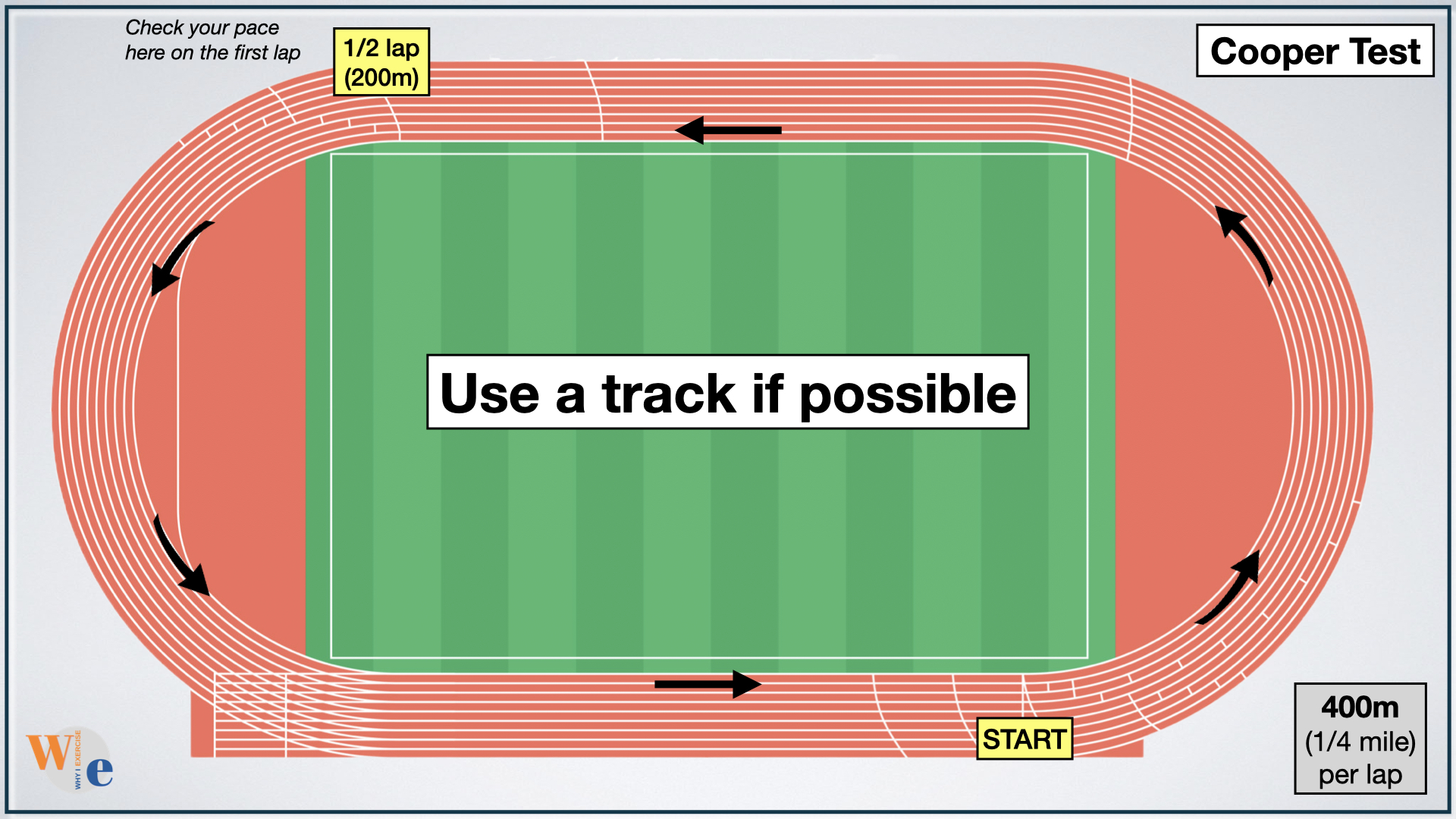 Running on a track makes it easier to check your pace.
Running on a track makes it easier to check your pace.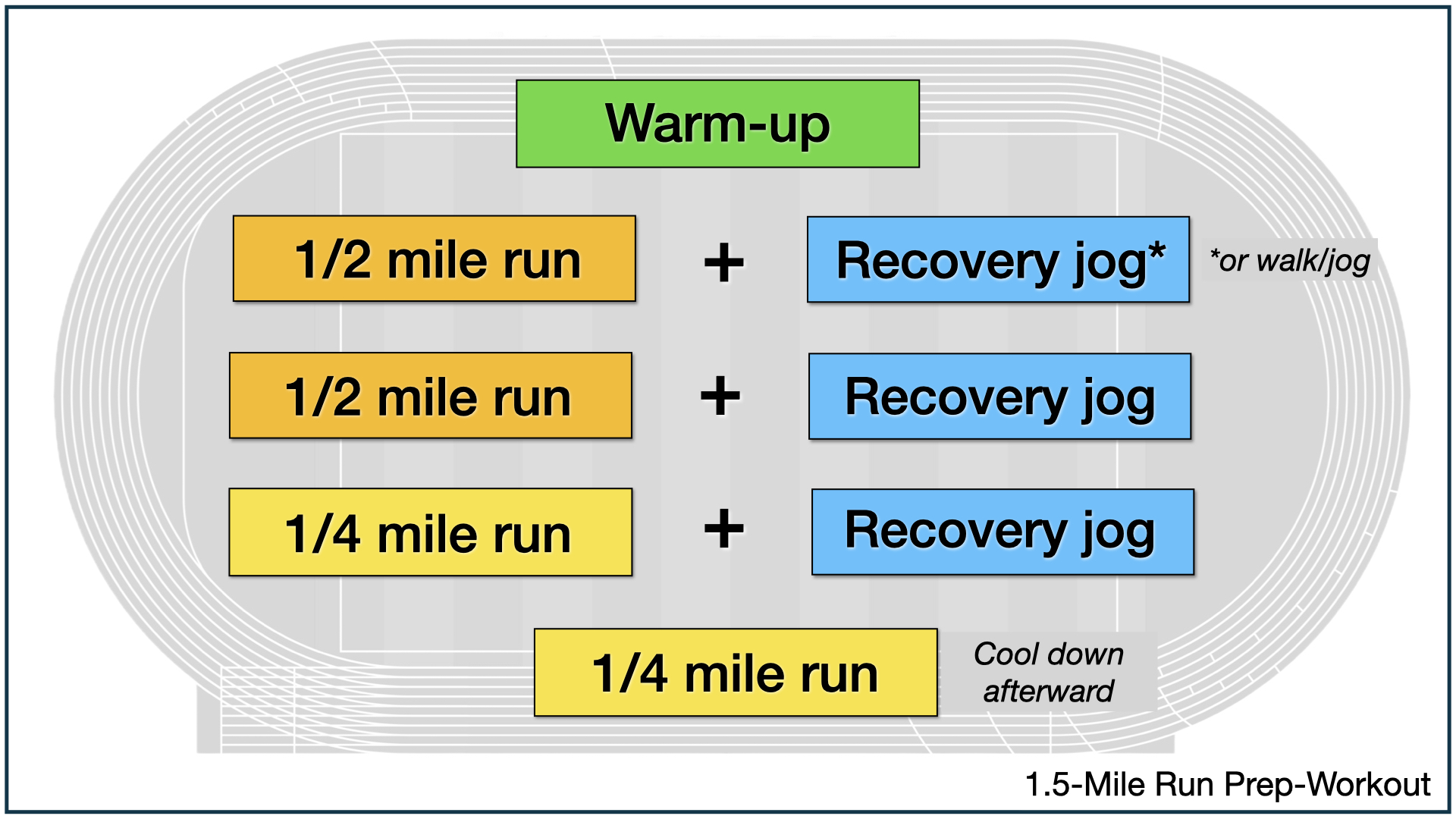 This workout helps you find the right pace for the test.
This workout helps you find the right pace for the test.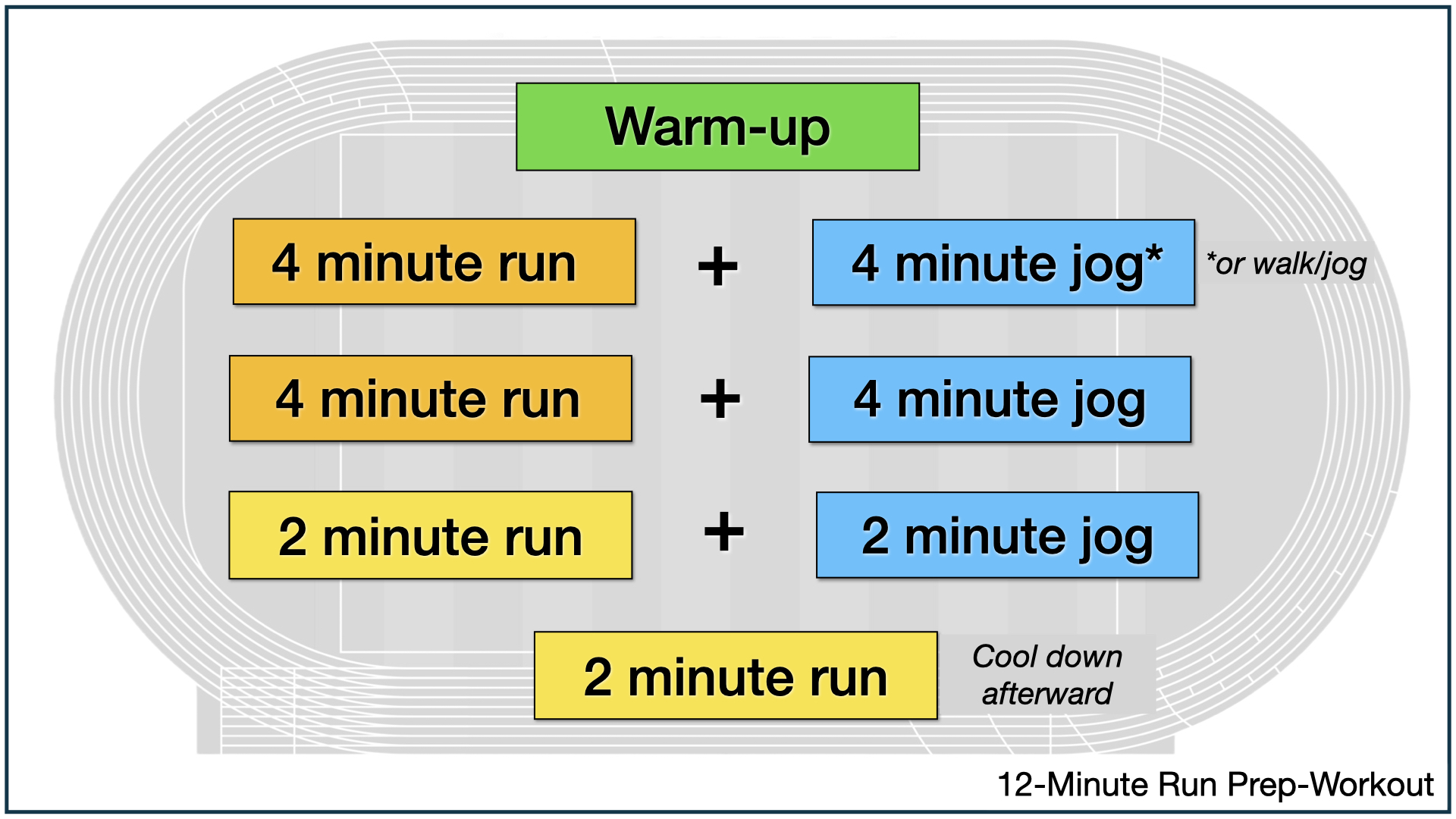
If you have a track available for this workout (and the test itself), it will help with pacing. If you were too fast or slow in the first half of the lap, you can correct your pace at the halfway point, before you get too far off your target pace.
After you finish the workout, make note of the average pace you could run in the later stages of the workout so you can aim for this pace in the test. Divide your 1/4 mile pace by two so you know your goal pace for the first 1/2 lap of the test.
Step 3: Stay on pace during the Cooper Test
Get coaching tips from my personal experience with this test (as a former competitive distance runner).
Now that we have a solid warm-up session and a road map for the test, we’ll look at the tips to stay on pace during the run. Efficiency is king in the Cooper Test.
The better you can mentally adjust during the test to keep yourself near a constant speed, the better your finish time will be.
Building up the adrenaline for maximum effort makes it easy to start too fast. The earlier you can catch the error and correct yourself, the less wasted energy. I recommend using a track and knowing your goal time at the 200-meter mark. Then you can adjust early on if needed. Settle into your best pace and relax.
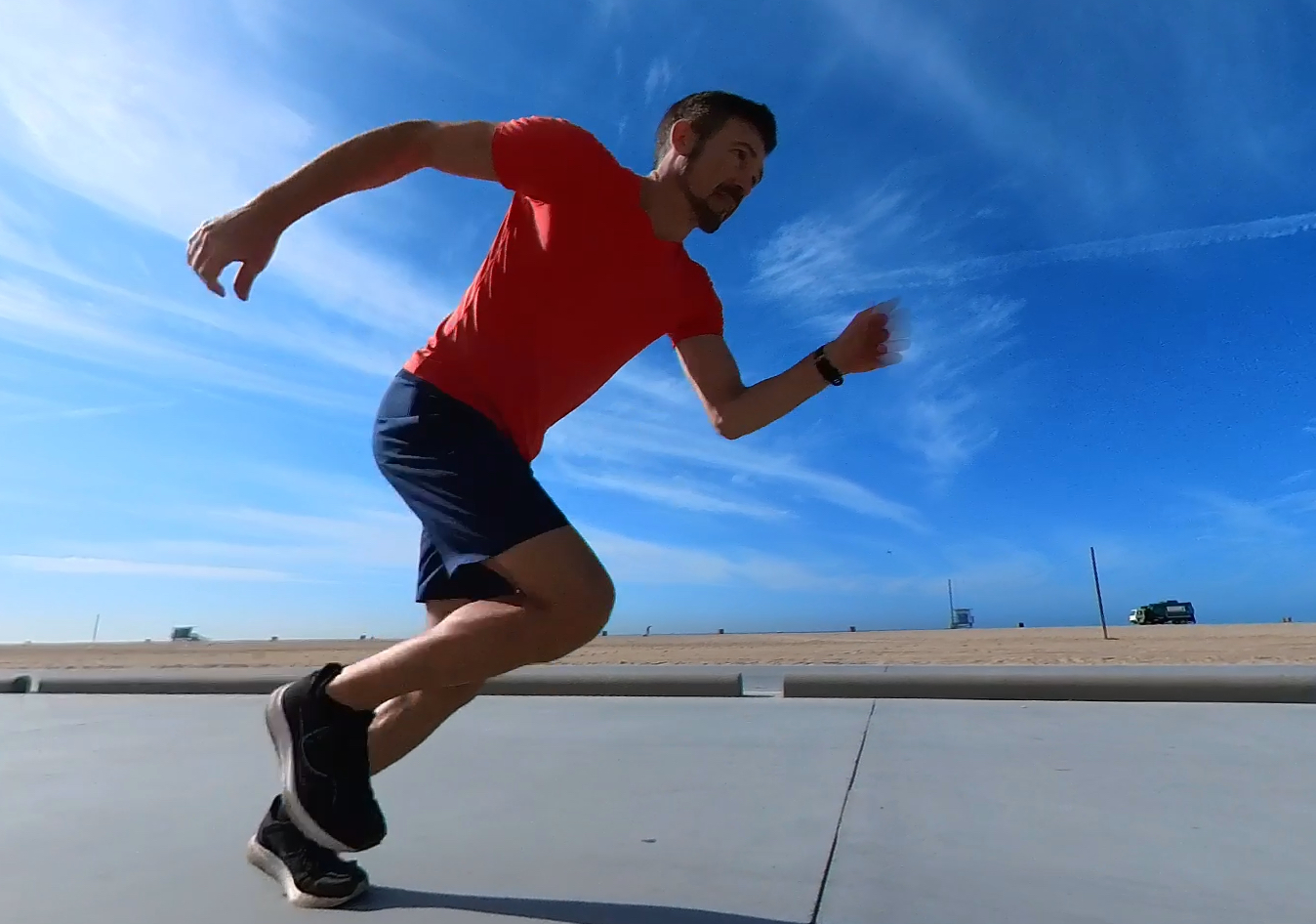 To get your best time, avoid starting too fast.
To get your best time, avoid starting too fast.The Cooper test becomes challenging at the halfway point when you’re putting in a hard effort while still being far from the finish line. Focus on holding a constant effort and letting go of unnecessary tension. Staying constant despite fatigue is an excellent athletic discipline you can develop through cardio training.
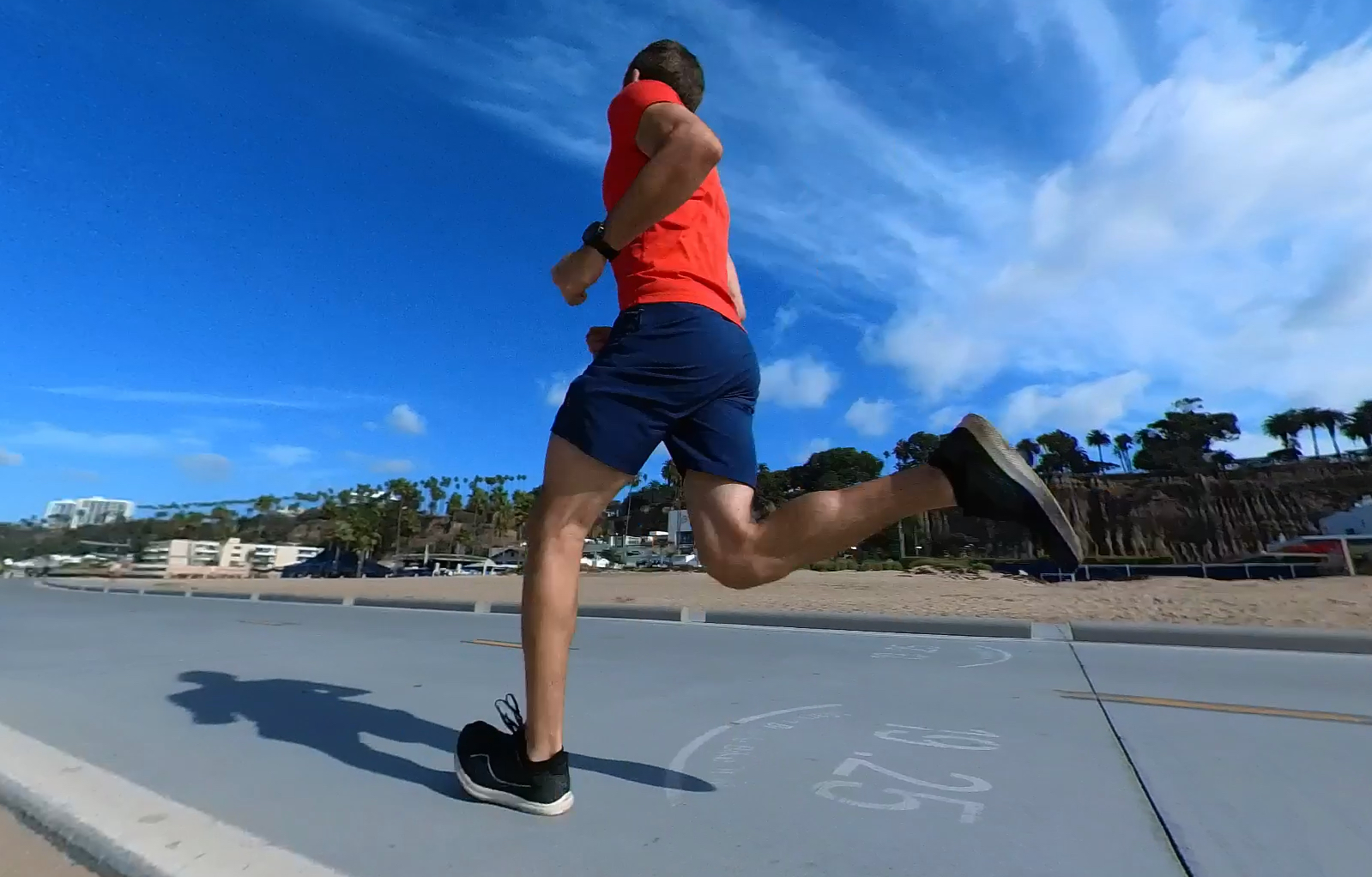 'Push on the gas' to maintain your pace.
'Push on the gas' to maintain your pace.With increasing fatigue around the one-mile mark, it's most difficult to hang on to your pace. It's too early to sprint to the finish line, so stay as relaxed as possible and 'push on the gas'. It may feel like you're going faster when you push on the gas, but the extra energy is keeping you from slowing down.
As you near the finish in the last 1/4 mile, use the rest of your adrenaline for a final surge to the finish.
The same tips will work for the 12-minute run. Maintain a strong effort and wait for the final 3-4 minutes to push on the gas. Scroll down to compare your time with age group standards.
Cooper Test Scoring Standards: 1.5-Mile Run
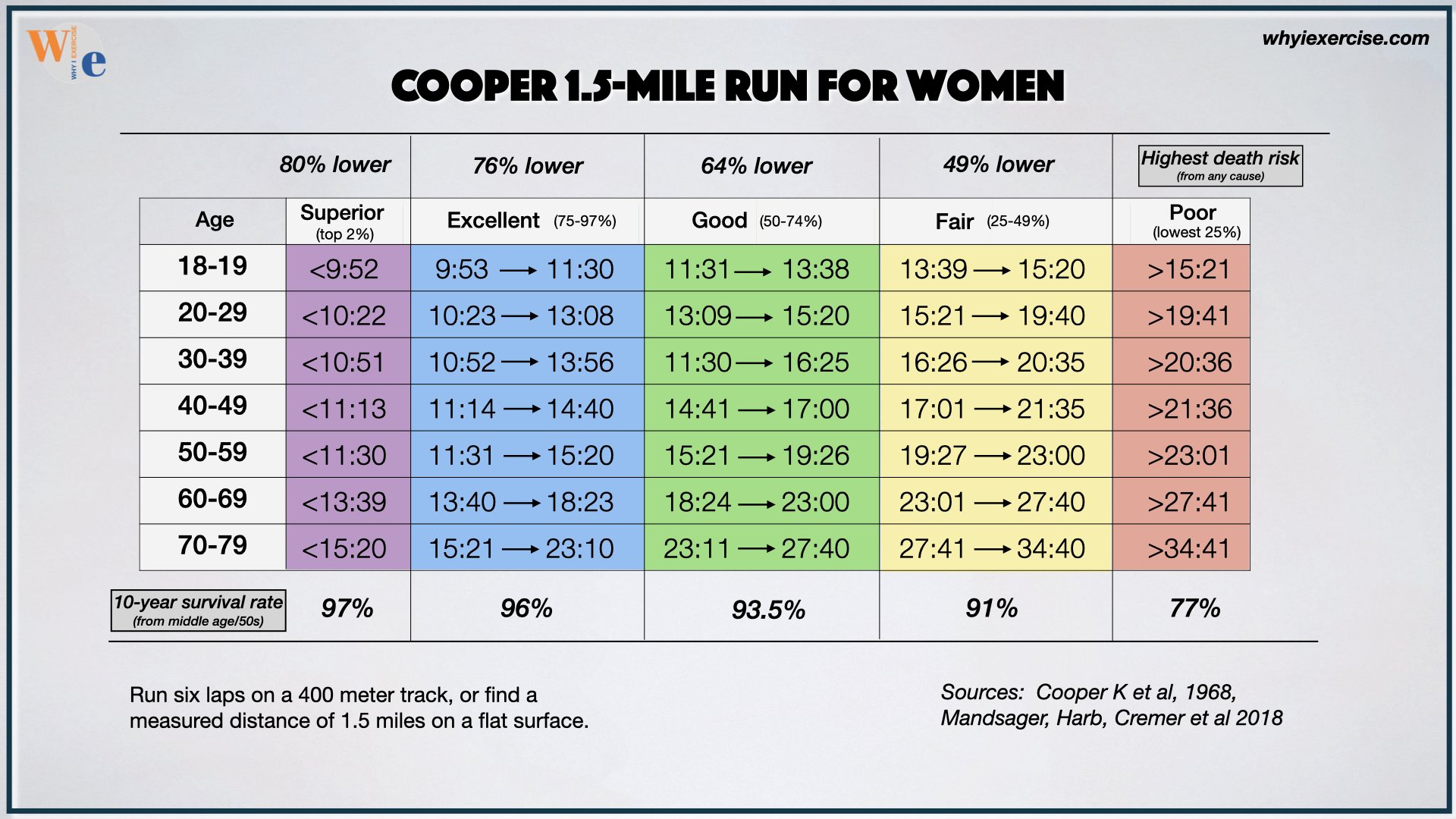 Cooper test results are close enough to lab testing to be used as reliable training targets to aim for optimal health and athletic performance.
Cooper test results are close enough to lab testing to be used as reliable training targets to aim for optimal health and athletic performance.Using Cleveland Clinic VO2 max research data, we can see the Cooper test scores associated with lower health risks and better survival rates. Find your age group on the left and scan to the right for your target time.
The better your fitness, the higher your survival rate (2). When you finish the test, you’ll know where you stand and how much you may need to improve for a better survival rate.
For example, if you are a 57-year-old male who ran the test at 16:00, your score is associated with a 10-year survival rate of 91%. And your risk of premature death from any cause is 49% lower than your peers with poor fitness.
If you were to train for 6-12 weeks and improve your time by 40 seconds, you would meet the standards to improve your 10-year survival rate to 93.5%, and then the death risk for your fitness level would be 64% lower than peers with poor fitness.*
Calculate your VO2 max from your 1.5-mile run or 12-minute run
VO2 max is a leading health indicator, considered equal to a vital sign by health scientists. You can calculate your VO2 max directly from your 1.5-mile or 12-minute run using this free e-book from Why I Exercise.
You'll also be able to assess the influence of your body weight and size on your health. Compare your scores to optimal health standards on the included scoring charts.
Cooper 12-Minute Run Scoring Standards
Here are the target distances in miles for the 12-minute run, also organized by age group, health risk and survival rate by VO2 max standards. A treadmill (set at a 1% grade) or a fitness watch with GPS would work to measure the distance, or you can use a track and the kilometer charts.
When you finish the test, you’ll know where you stand and how much you may need to improve for a better survival rate.
Suppose you are a 52-year-old female who ran 1.20 miles in 12 minutes. Your score is associated with a 10-year survival rate of 91%. And your risk of premature death from any cause is 49% lower than your peers with poor fitness.
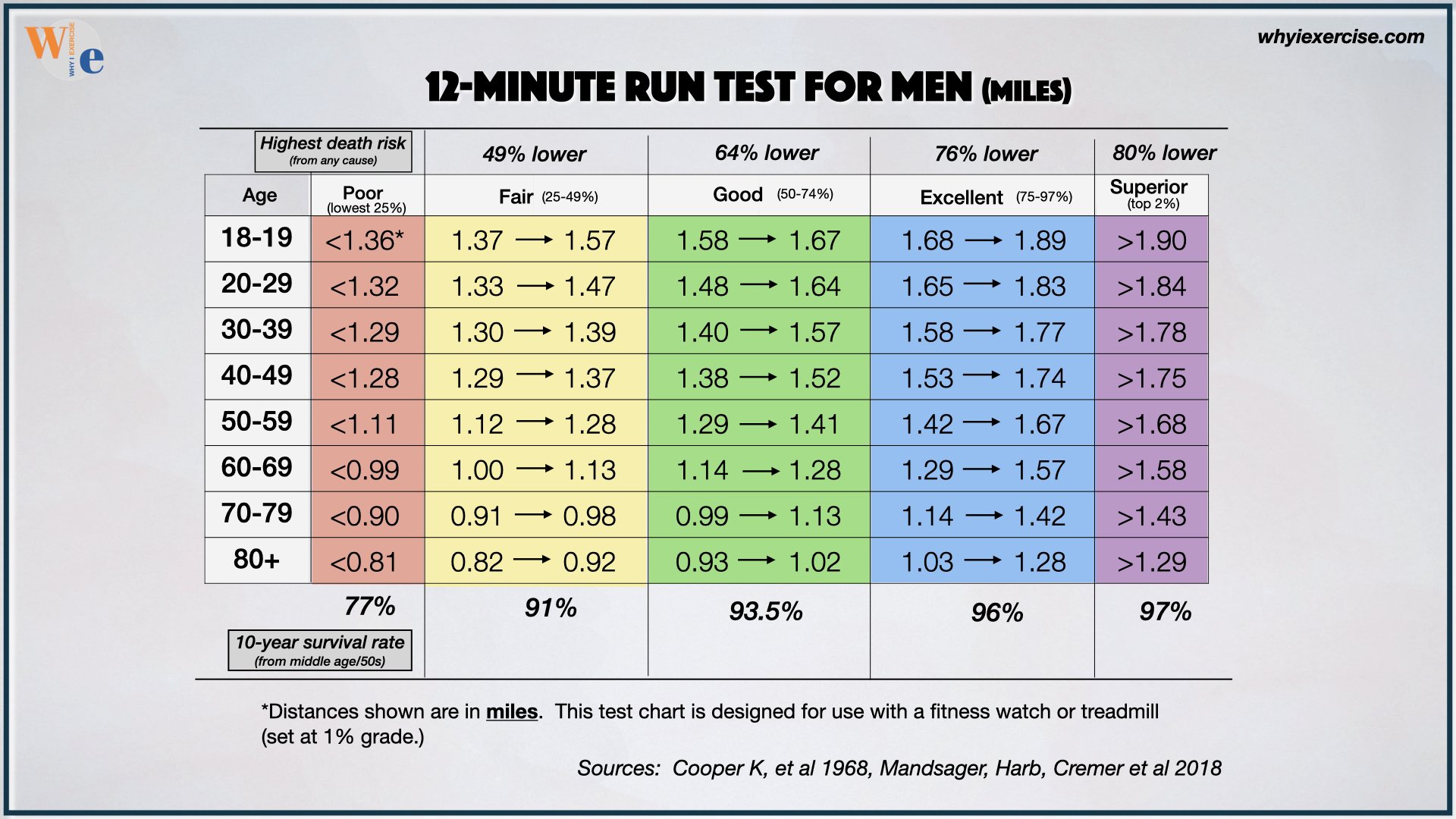 Cooper test results can be used as reliable training targets to aim for optimal health and athletic performance.
Cooper test results can be used as reliable training targets to aim for optimal health and athletic performance.If you were to train for 6-12 weeks and improve your distance by 0.09 miles (less than one tenth of a mile), you would meet the standards to improve your survival rate to 93.5%, and then the death risk for your fitness level would be 64% lower than peers with poor fitness.
Cooper 12-Minute Run on a Track
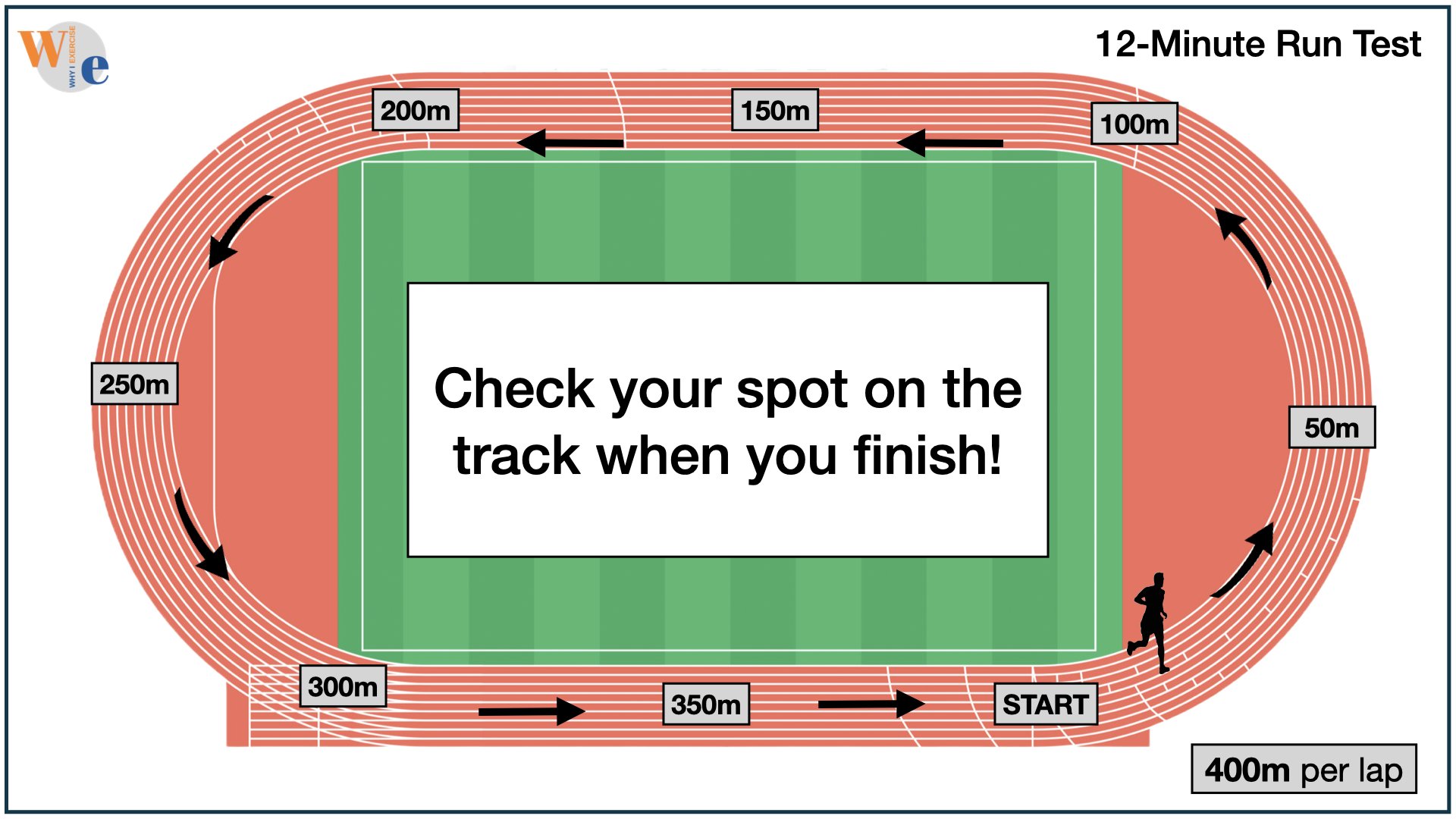 How to measure your 12-minute run distance using a track.
How to measure your 12-minute run distance using a track.If you're using a track and a stopwatch for the 12-minute run, be sure to count your laps and notice your finish line position at the end of the run so you can add up your meters for the test. For example, 6 complete laps + 100 meters equals 1700 meters. Then convert the meters you ran to kilometers by putting a decimal between the first two digits. 1700 meters is 1.7 km.
Here are the kilometer charts. Your results show exactly how much you need to improve if your score doesn’t meet your goal.
A 50-year-old man who runs 1.70 km in 12 minutes has a score in the poor fitness group. Poor fitness means a 10-year survival rate of just 77% and the highest risk of premature death.
If he trains enough to improve his distance by 0.10 km, he joins the group associated with a 91% 10-year survival rate. He also lowers his death risk by 49%. One-tenth of a km further is a very doable target and worth the effort for such a substantial improvement in potential health benefits!
Next, we'll review the tips to get your best score on the Cooper test.
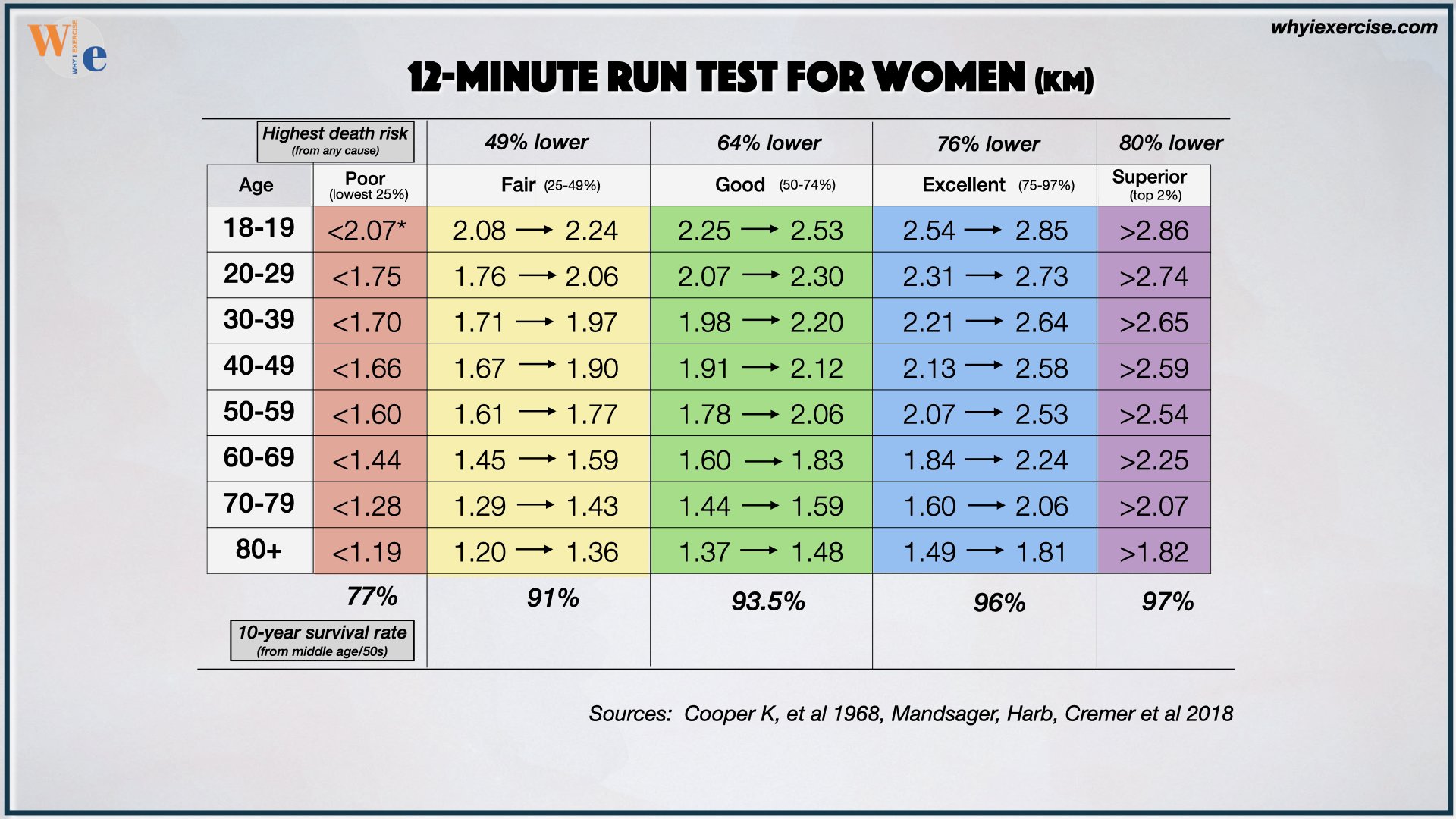 Cooper test scoring standards by age group using kilometers.
Cooper test scoring standards by age group using kilometers.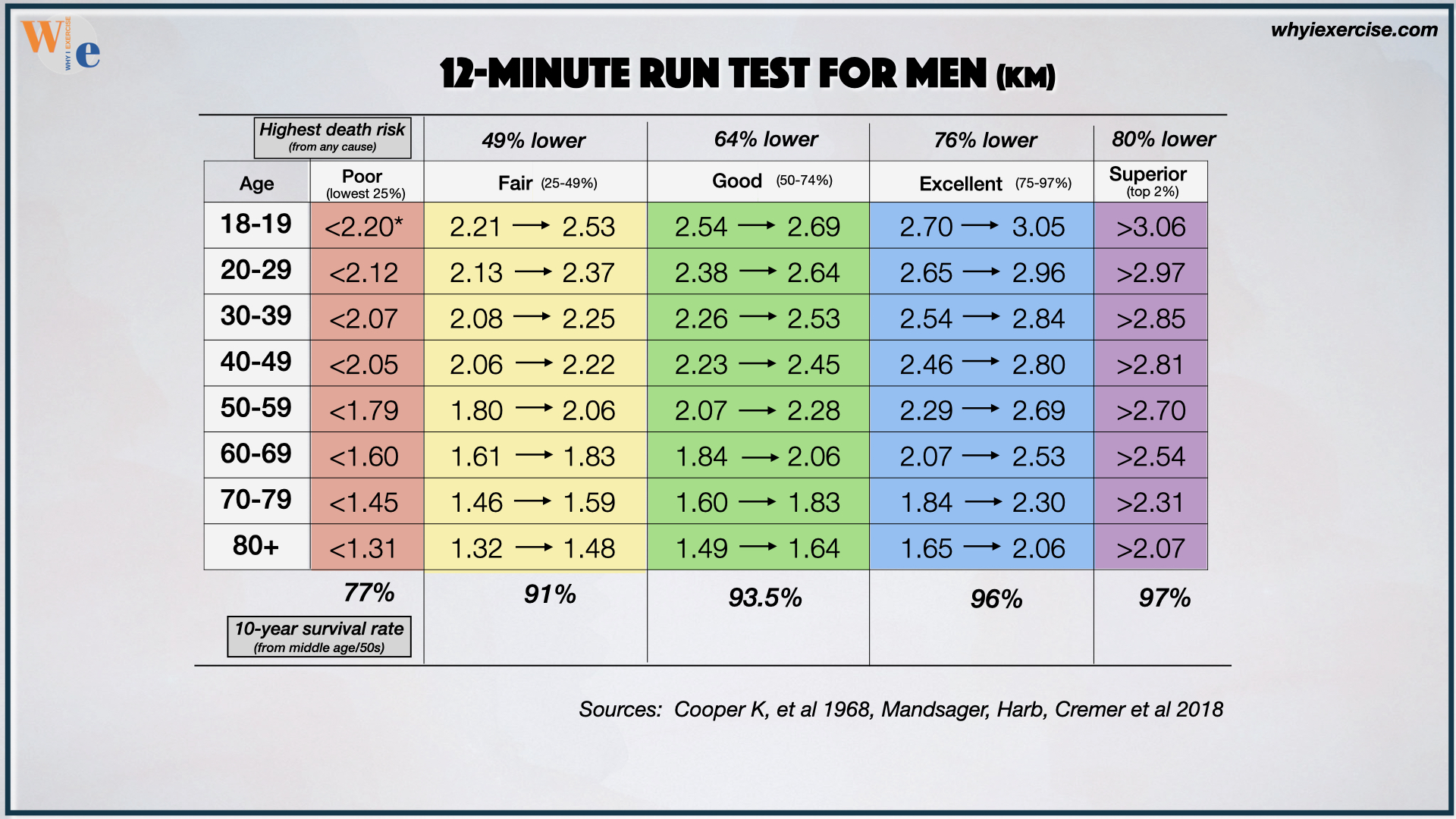
Alternative testing options
If you're not feeling ready to run at your best effort, there is another possibility. Run the test at a sub-maximal effort and see if you can still meet your fitness goal on the chart. Otherwise, you can get a VO2 max estimate from the Rockport Walking Test or a reliable cardio fitness rating from the 3-Minute Step Test.
VO2 max from a fitness watch such as Garmin is another option. Garmin has released a review claiming their devices have a very high correlation with VO2 max lab tests, but independent studies and user feedback online are mixed (7-9).
Summary: Top 7 Cooper Test Tips
- Warm up thoroughly without overdoing it.
- Run on a track if possible.
- Run a prep workout first to find your pace for the test.
- Try not to start too fast.
- Fine-tune your pace ASAP if needed.
- Relax and hold a constant strong effort.
- 'Push on the gas' to maintain your speed.
The Cooper Test is the most accurate running-based self test to estimate your cardio fitness and its effect on your athletic performance and future health. Use the methods described in this article for a highly reliable fitness measurement to compare to healthy standards for your age group.
Once you know your score and peer-level fitness rating, you can adjust your exercise training and physical activities to reach your desired fitness level. Visit the masterclass articles below to learn what makes VO2 max (cardio fitness) a leading health measurement. Accurate but less demanding cardio fitness test options are also available below.
More Masterclass Articles
VO2 max VO2 max impacts our performance, our health, and even our survival! Find out whether you’re fit enough for optimal health and top performance. Find out how much you need to improve your fitness to lower your health risk significantly.
Rockport Walking Test This simple test makes it possible for non-athletes to find their VO2 max. Walk 1 mile for time, and enter your heart rate into the fitness calculator. The better your score, the lower your risk for future health issues.
3-Minute Step Test This is an easy, quick, effective screen of your cardio fitness, and a reliable alternative to running-based tests. Grab a 12-inch step and follow along with this video. You’ll get a research-backed score that you can use 2-3 months later to measure your training progress.
A Health & Fitness Blueprint, From Why I Exercise
Get reassurance about all aspects of your exercise training, or learn where to improve to get the long-term health benefits you need.
Measure a full range of fitness metrics (including VO2 max) against scientific standards for health and longevity, and get specific, meaningful benchmarks to aim for as you work toward your ultimate fitness goals.
References
1) Cooper KH. A means of assessing maximal oxygen intake. Correlation between field and treadmill testing. JAMA. 1968 Jan 15;203(3):201-4. PMID: 5694044.
2) Mandsager K, Harb S, Cremer P, Phelan D, Nissen SE, Jaber W. Association of Cardiorespiratory Fitness With Long-term Mortality Among Adults Undergoing Exercise Treadmill Testing. JAMA Netw Open. 2018 Oct 5;1(6):e183605. doi: 10.1001/jamanetworkopen.2018.3605. PMID: 30646252; PMCID: PMC6324439.
3) The Cooper Institute; 50 Years of the 12-Minute Run; https://www.cooperinstitute.org/blog/50-years-of-the-cooper-12-minute-run
4) Casado, A, F González-Mohíno et al. "Training Periodization, Methods, Intensity Distribution, and Volume in Highly Trained and Elite Distance Runners: A Systematic Review". International Journal of Sports Physiology and Performance 17.6 (2022): 820-833. <https://doi.org/10.1123/ijspp.2021-0435>. Web. 28 Mar. 2023.
5) Filipas L, Bonato M, Gallo G, Codella R. Effects of 16 weeks of pyramidal and polarized training intensity distributions in well-trained endurance runners. Scand J Med Sci Sports. 2022 Mar;32(3):498-511. doi: 10.1111/sms.14101. Epub 2021 Nov 25. PMID: 34792817; PMCID: PMC9299127.
6) Bacon AP, Carter RE, Ogle EA, Joyner MJ. VO2max trainability and high intensity interval training in humans: a meta-analysis. PLoS One. 2013 Sep 16;8(9):e73182. doi: 10.1371/journal.pone.0073182. PMID: 24066036; PMCID: PMC3774727.
7) Helm, Macy M.; Carrier, Bryson; Davis, Dustin W.; Cruz, Kyle; Barrios, Brenna; and Navalta, James W. (2021) "Validation of the Garmin Fenix 6S Maximal Oxygen Consumption (VO2max) Estimate," International Journal of Exercise Science: Conference Proceedings: Vol. 14: Iss. 1, Article 29. Available at: https://digitalcommons.wku.edu/ijesab/vol14/iss1/29
8) Düking P, Van Hooren B, Sperlich B. Assessment of Peak Oxygen Uptake with a Smartwatch and its Usefulness for Training of Runners. Int J Sports Med. 2022 Jun;43(7):642-647. doi: 10.1055/a-1686-9068. Epub 2022 Jan 30. PMID: 35094376; PMCID: PMC9286863.
9) Passler S, Bohrer J, Blöchinger L, Senner V. Validity of Wrist-Worn Activity Trackers for Estimating VO2max and Energy Expenditure. Int J Environ Res Public Health. 2019 Aug 22;16(17):3037. doi: 10.3390/ijerph16173037. PMID: 31443347; PMCID: PMC6747132.
Return to physical fitness tests.
Return from Cooper Test to home page: Why I exercise.
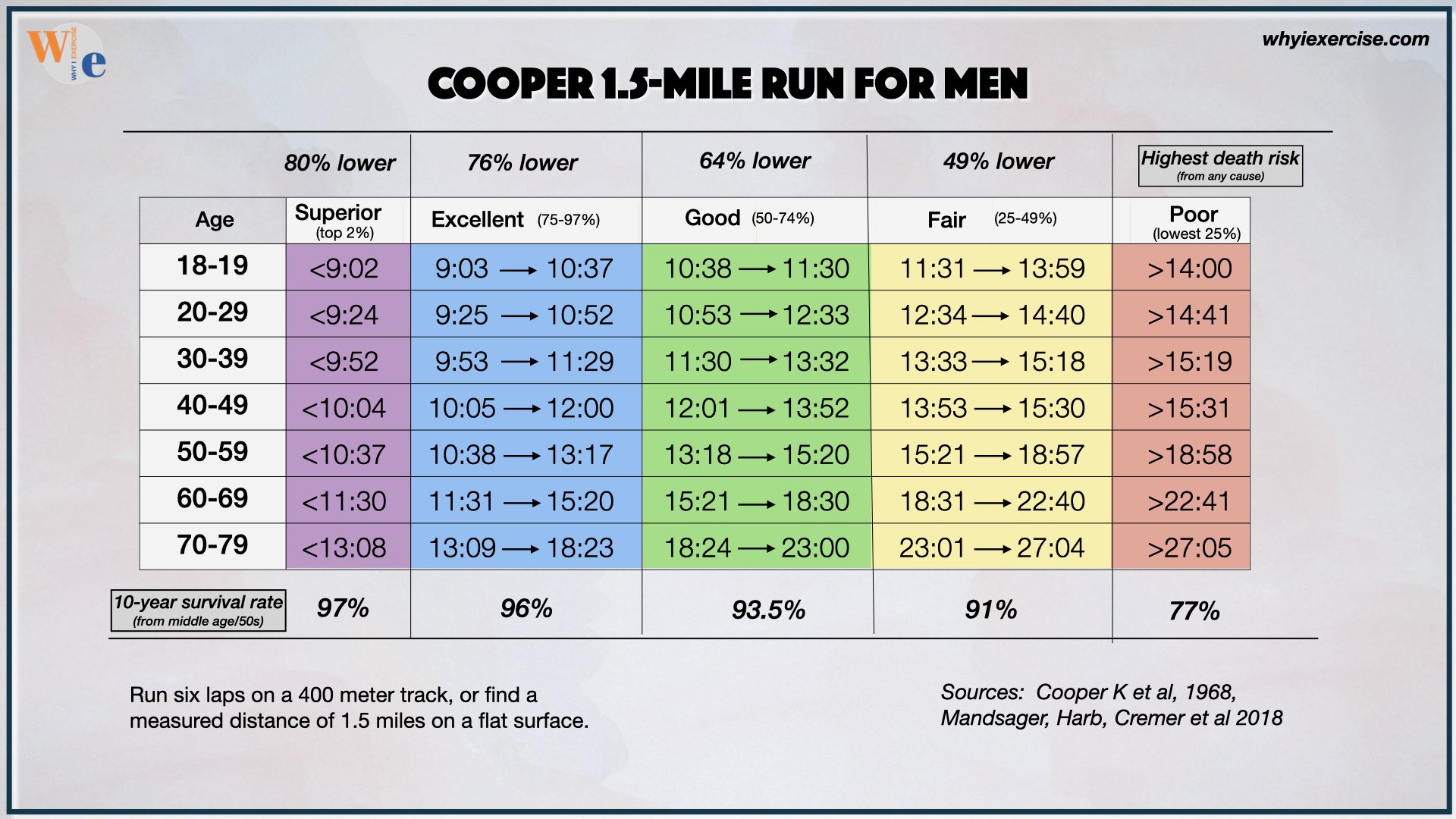

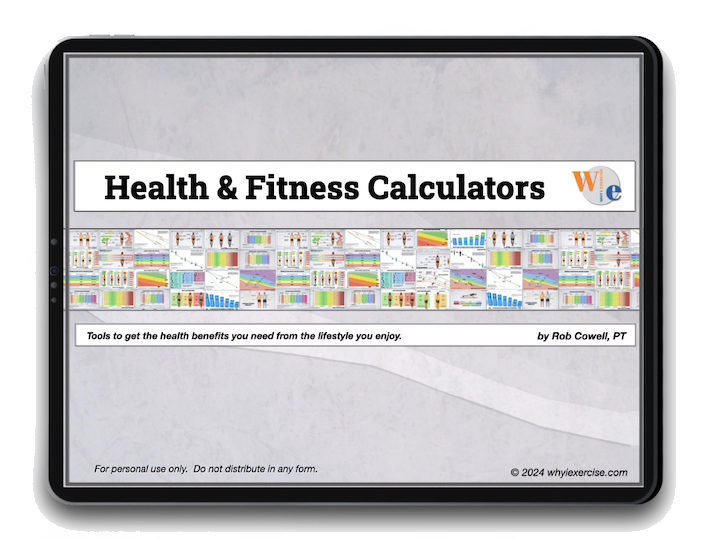
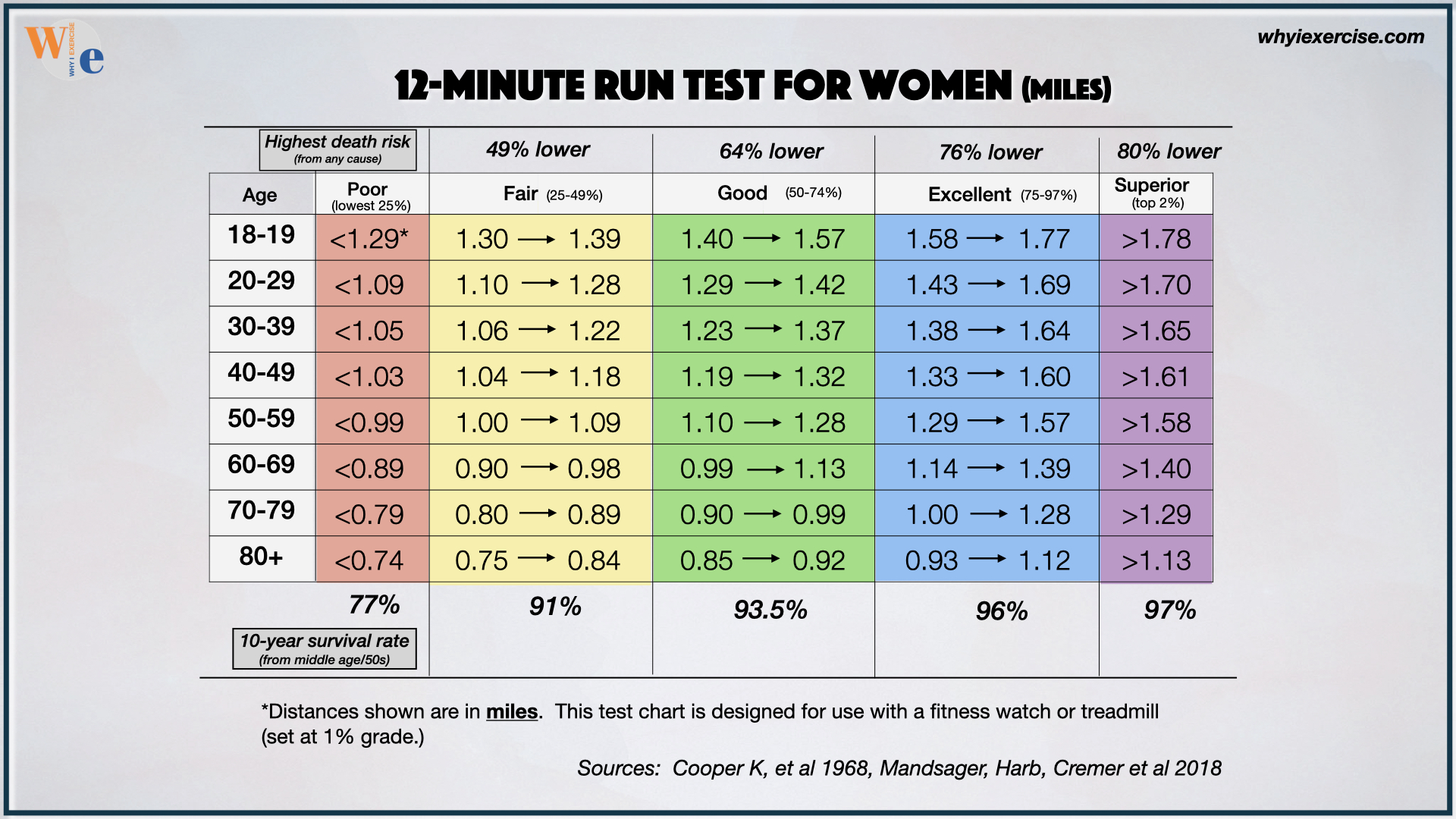


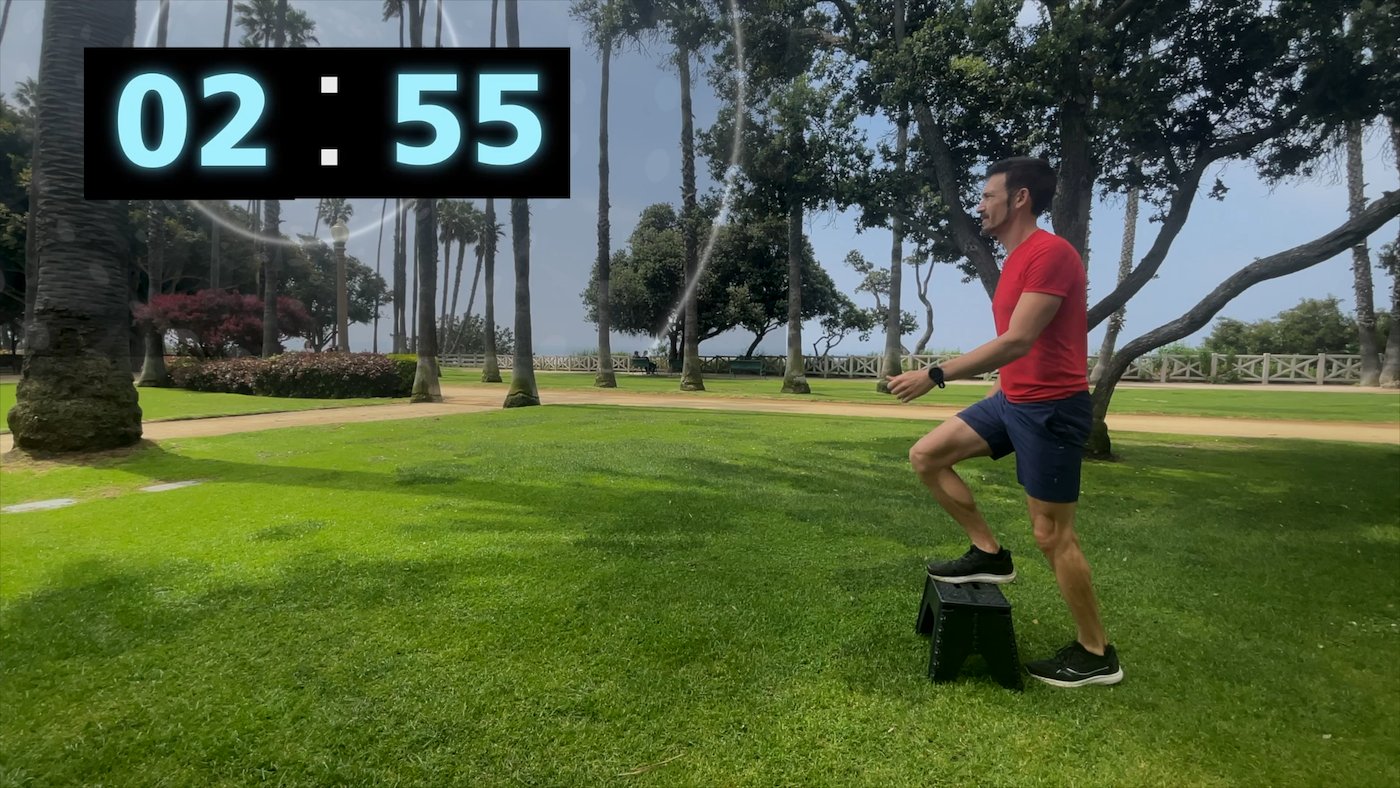

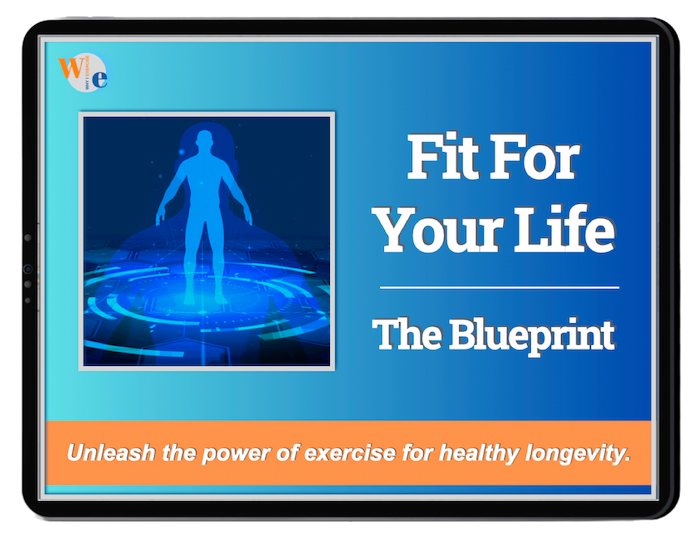
Leave me a comment in the box below.